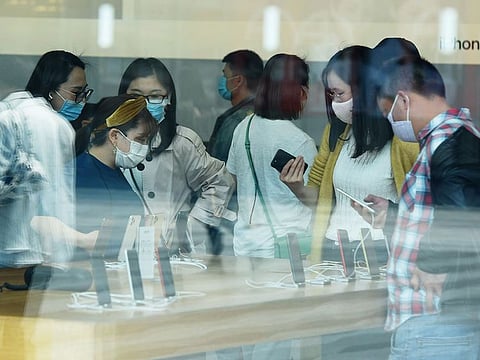Apple’s 5G plans get a virus-sized squeeze
Supply disruptions and weak demand could mean delays for the iPhone 12

New York: The severity of Apple Inc.’s challenges amid the COVID-19 pandemic is starting to become clear. And it’s not looking great.
The reports covering the prospects of an iPhone delay are piling up. Last month, Nikkei reported Apple was considering putting off the introduction of its 2020 iPhones. Bloomberg News then said the new iPhones could be launched a few weeks later than normal due to the disruptions caused by the coronavirus.
And Monday, the “Wall Street Journal” reported the company will push back the mass production of its upcoming iPhones by roughly a month, against the backdrop of weaker demand and supply-chain issues in Asia. The Journal also noted Apple plans to cut the number of handsets it manufactures in the second=half of 2020 by as much as 20 per cent.
Hardware dependent... still
The timely launch and availability of new iPhones are critical for Apple. For all the talk about how the company is shifting its strategic focus to services and subscriptions, it is still powered by its hardware business. In its last quarterly report, the iPhone segment accounted for 61 per cent of Apple’s revenue, versus just 14 per cent for services. And of course, every new smartphone sale represents a potential services buyer in the future.
Delays may unavoidable, though, as shelter-in-place orders and travel restrictions impede the ability of Apple’s engineers to work directly with its suppliers and phone assemblers in Asia. Key processes such as testing and prototyping that are required in designing new phones simply do not work as well over video conference.
Moreover, the intricate collaboration is all the more important this time around because it will be the first year Apple releases 5G-enabled iPhones, which require significantly higher engineering demands versus the incremental annual upgrades of the past.
Where’s the demand?
On top of any production snafus, the other major problem for Apple is demand-related: Consumers may put off phone purchases in the more uncertain economic environment. At the end of the day, iPhones are a consumer discretionary luxury - a want-to-have rather than a need-to-have.
iPhone owners holding onto their phones longer is one of Wall Street’s biggest worries for Apple, with some analysts now projecting the average iPhone replacement cycle will now extend beyond four years. And it makes sense. If you’re fretting about your job security, the last thing you’re going to do is buy a new $1,000 phone when your current phone works fine.
Wireless companies are already seeing the shift to a lower level of smartphone upgrades. Last week, AT&T Inc. said it saw a “record low” in the percentage of its customers who have upgraded their smartphones for a quarter. Verizon Communications Inc. also saw a more than 40 per cent decline in upgrades during the four-week period ended April 15.
While a big part of the declines may reflect the fact that wireless storefronts were closed, personal-finance issues had to have played a large role as well.
Tech earnings are in the spotlight this week, and Apple likely won’t be alone in discussing the latest coronavirus implications for its supply chain and future sales. Earlier this month, Amazon.com Inc. CEO Jeff Bezos talked in his annual letter to shareholders about how the pandemic has put severe stress on its suppliers and delivery networks, forcing the e-commerce giant to make some arduous choices.
Both companies are slated to reported their latest results on Thursday, and both will likely have more to say.
Sign up for the Daily Briefing
Get the latest news and updates straight to your inbox







